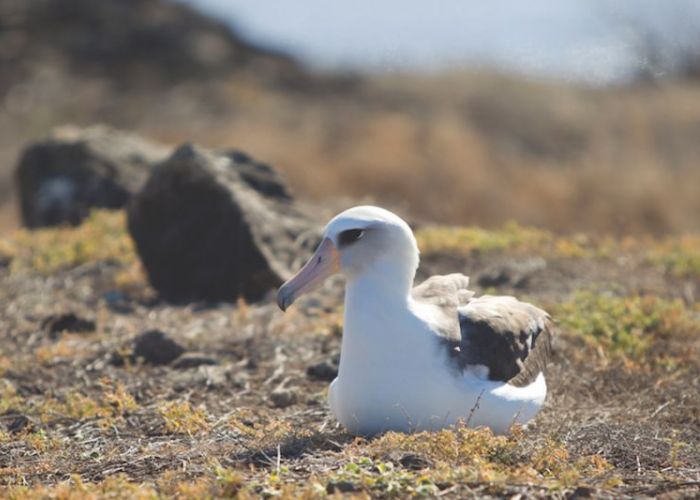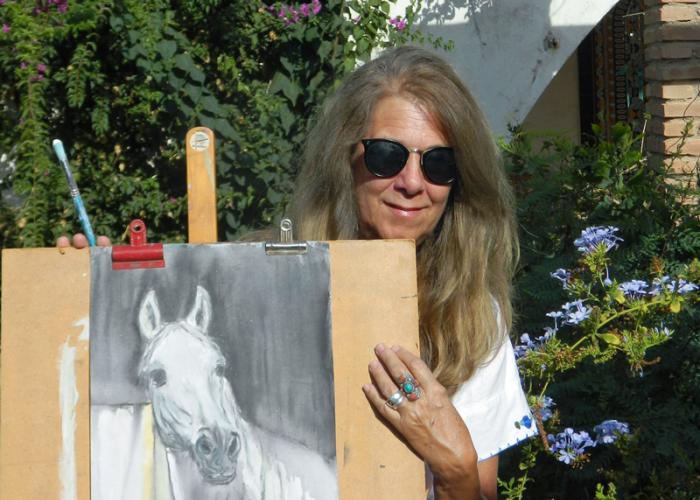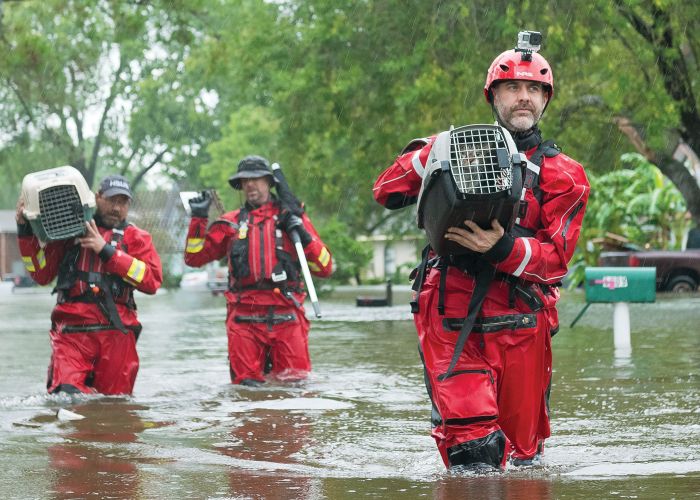Home stretch
A history-making campaign could spell the end of greyhound racing in the U.S.
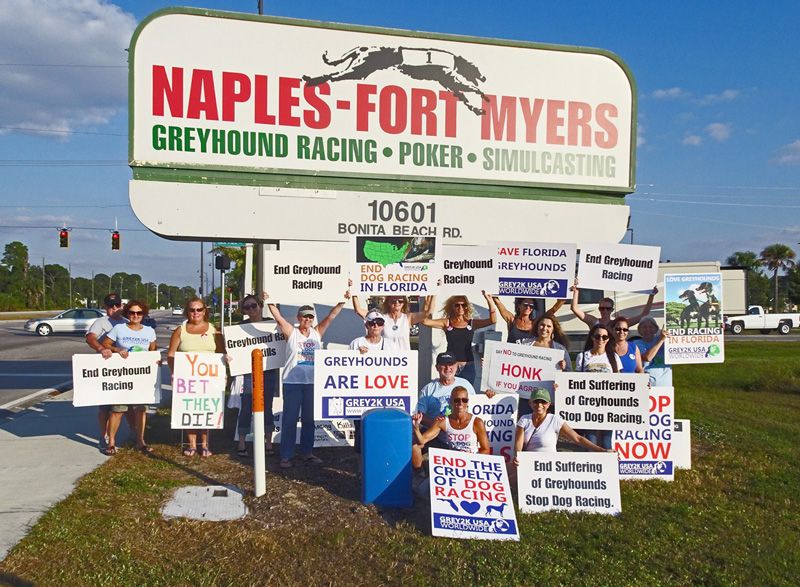
Sonia Stratemann knew nothing about dog racing until she moved to Florida and adopted several greyhounds from the Palm Beach Kennel Club, a dog track and casino just 10 minutes from her home. It wasn’t long before she was volunteering with a greyhound rescue group and driving to the track to pick up dogs whom owners no longer wanted.
Some had broken legs or other career- ending injuries; others simply weren’t fast enough to win races. But winners and losers alike suffered the same lives of confinement, spending 20 to 23 hours a day in stacked metal cages barely large enough for them to stand up or turn around.
Stratemann was appalled by the dogs’ living conditions and the prevalence of untreated injuries, but because there was no law requiring owners to give unwanted dogs to rescues, she didn’t want to risk damaging the relationship. So she kept her mouth shut.
“I knew the dogs needed to get out, and I knew if I said something, that would be the end of me being able to help the dogs. They weren’t going to stop greyhound racing if I said, ‘This is horrible.’ So I just put my head down and kept” taking dogs, she says.
When she formed her own rescue group in 2006, trainers and others in the industry told her not to include the word “rescue” in the name. “You can never say ‘rescue,’ because they say the dogs aren’t rescued,” she says, even though the owners “have no intention of taking care of [the dogs] after they’re not making money for them.”
So she named the group Elite Greyhound Adoptions instead, and the all-volunteer organization quickly became known for taking dogs who were harder to adopt, including ones with serious injuries. The group’s veterinary bills were high, but Stratemann couldn’t post photos or stories of dogs with broken limbs. The industry didn’t want the public to know how frequently dogs are injured, she says, which meant she had to be discreet and raise money for the surgeries through private appeals.
One time, she shared a local news article on her group’s Facebook page about a trainer adoping his dogs. That triggered a call from the track demanding that she remove the post.
“I tell my husband all the time, ‘They have me by the throat,’” she says. “They just hold it over you.”

The threat was real, as Stratemann discovered in late December, when she’d finally had enough. She started publicly sharing photographs of injured dogs, and she joined a ballot campaign led by GREY2K USA Worldwide and the Humane Society of the United States to end greyhound racing in the state. Within days, she says, she was essentially blacklisted at the Palm Beach Kennel Club. “I was told that the track told all the kennels that if any of them gave any dogs to me or worked with anyone that gave any dogs to me, they’d be kicked out,” she says. “None of the other [greyhound rescue] groups will work with me, because they’re too afraid they’re going to be caught and then they won’t be able to get dogs.”
In its first decade, Elite Greyhound rehabilitated and found homes for more than 2,300 greyhounds that the racing industry no longer wanted. This year, Stratemann’s group has only been able to take in a few dozen dogs from other sources, even though it has the capacity to adopt out many times that number.
For Stratemann, speaking out after so many years of silence is a calculated gamble— one that she hopes will save many more dogs in the future.
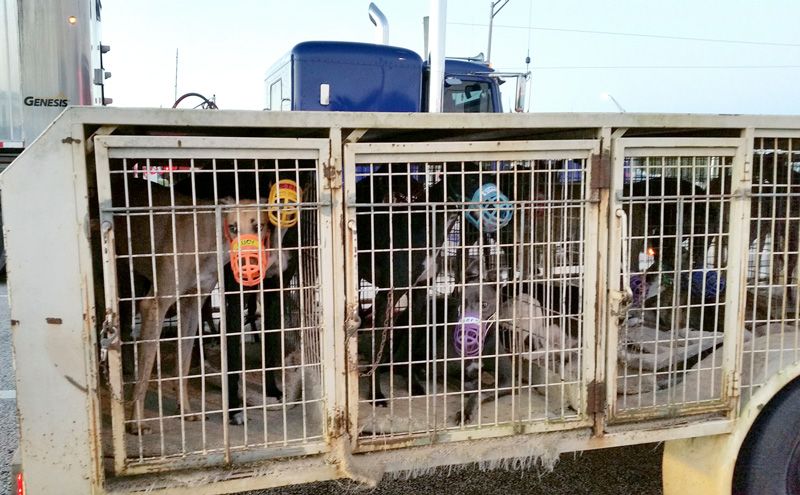
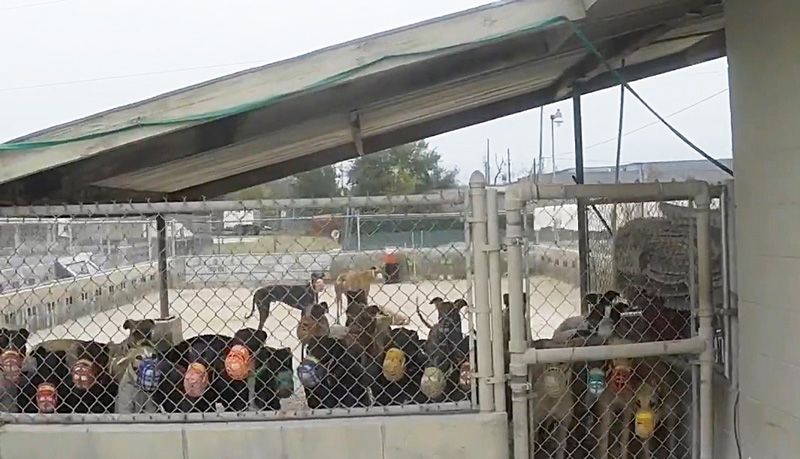
Lives at stake
Since its heyday in the 1980s, commercial greyhound racing has declined substantially in the U.S. It’s now illegal in 40 states, and the number of tracks has dropped from 46 in 2004 to 17 today—11 of them in Florida.
But even as the industry declines, the suffering inflicted on dogs remains considerable. Since 2013, more than 460 greyhounds have died during races on Florida tracks—about one dog every three days— some by electrocution when they hit the rail that controls the mechanical lure. And on-track deaths are just the tip of the iceberg.
About 10,000 dogs enter the U.S. racing circuit each year, says Carey Theil, GREY2K USA executive director, and thousands more are bred but never make it to a track. No one knows how many are seriously injured during training, are killed as surplus or die at breeding farms or in kennels.
Those who survive to race are typically housed in kennels at the track, where they live in near-constant confinement with little human interaction or veterinary care. Kate MacFall, HSUS Florida state director, who has fostered numerous greyhounds, remembers walking into kennels where “the urine burned your eyes. It was just so depressing and loud. So many dogs packed into cages in rows and rows, with muzzles on in the cages. The ticks and fleas were unbelievable.”
For years, GREY2K USA and the Humane Society of the United States have worked to pass legislation to require more transparency and curb the industry’s worst abuses. But in Florida, most of those efforts have died in the state legislature, despite having bipartisan champions and broad public support.
“To show you how out of touch the greyhound industry is in Florida, just a few months ago they floated a bill to legalize small amounts of cocaine in greyhounds,” Theil says, noting that such drugs are sometimes given to dogs as performance enhancers. “They’re so out of touch, so against any reforms.”
That the Florida tracks operate at all is largely due to deals the industry negotiated years ago, which require the tracks to run live dog races in order for them to offer more profitable forms of gaming. “Even if it’s raining out and no one is watching, dogs have to race around in circles for them to operate poker rooms,” says MacFall.
Dog racing is also a loss for taxpayers: A 2013 study commissioned by the Florida legislature found that dog racing costs the state between $1 million and $3.3 million a year because the regulatory costs exceed revenue.

This year, animal welfare advocates had the opportunity to bypass the legislative process and bring the issue directly to the voters. In April, the state’s Constitutional Revision Commission met to consider ballot initiative proposals, something that only happens every 20 years. GREY2K USA and the HSUS worked for months to build public support for a proposal to phase out greyhound racing. Out of about a thousand proposals submitted to the commission, says Theil, only eight amendments were approved for the November ballot. Greyhound racing was one of them.
Amendment 13 would immediately remove the requirement for tracks to hold dog races in order to offer other forms of gambling and would end dog racing entirely by December 31, 2020. And because Florida anchors the entire U.S. greyhound racing industry, says MacFall, a victory there will have repercussions throughout the nation.
It won’t be easy: In Florida, ballot initiatives must garner a supermajority of votes—60 percent—to succeed, says Katie Lisnik, HSUS director of companion animals public policy. “Florida has a pretty strong early voting process, and we’ll be engaging at those venues. We’ll be putting as much money as we can into digital advertising and cable TV ads and garnering all the free media engagement we can do. People need to be informed.”
11 of the remaining 17 greyhound racetracks in the United States are in Florida.
“I think this is one of the most important animal welfare campaigns in U.S. history,” adds Theil. “We’re going to work extremely hard. We have a huge grassroots network that’s going to lean in and fight for these dogs.”
Stratemann is one of thousands of local volunteers working on the campaign. She’s attended public hearings throughout the state and spoken before the Constitution Revision Commission about the cruelty she’s witnessed in the industry.
It’s her first time working with GREY2K USA, a group she privately applauded but always steered clear of for fear of the impact on her rescue efforts. “You can’t say that word [GREY2K] without being kicked out of everything. They’re really afraid of GREY2K, and rightly so.”
Now she’s cautiously optimistic that she’s backing a winning campaign. “Kate [MacFall] and GREY2K know what they’re doing.”
That hope keeps her going when her thoughts inevitably turn to the dogs at the Palm Beach track—the dogs she’s no longer able to save.
“After all these years, it’s really hard now to know that, because I opened my mouth, dogs are dying,” she says. “But hopefully this is all going to better for thousands and thousands more.”


